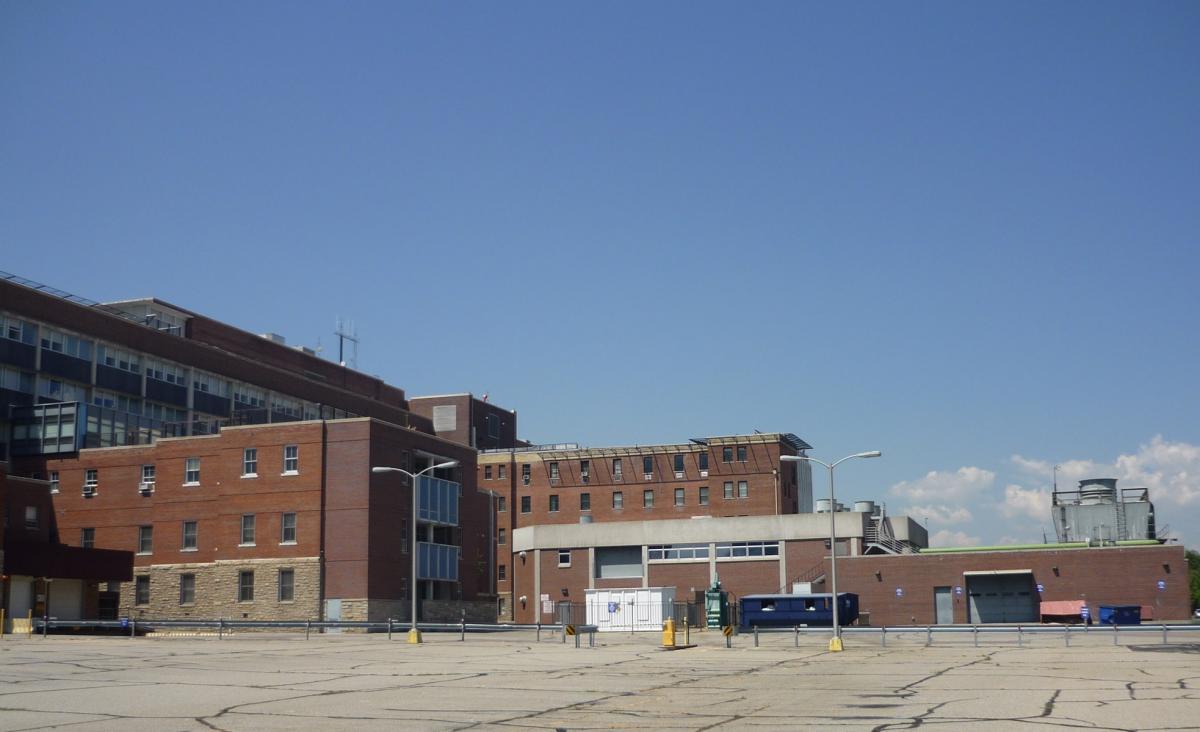The Local newsletter is your free, daily guide to life in Colorado. For locals, by locals.
On the surface, the Sloan’s Lake neighborhood looks like a typical urban dream: Joggers, cyclists, and parents with strollers move along the shores of the area’s namesake. To the north and east, single-family homes are shaded by old oaks. To the west, the Rockies are on full display—there is nothing above three stories to block the view. It’s a nearly perfect vantage point, until you look south to the old St. Anthony’s Hospital, which, now vacant, looks more like an abandoned warehouse than a former hospital.
The view of St. Anthony’s has not always been this way. For 120 years, the West Colfax Avenue site provided care to Denver residents. Last summer, however, the hospital relocated to Lakewood, and people began looking at the old location in a new light. Instead of the white of its hallways or of its doctor’s coats, all that some see is brown—brownfield, that is.

Brownfields are polluted low-use or abandoned sites in industrial areas, and St. Anthony’s is not the only location along Colfax considered to be one. The hospital, along with properties at West Colfax and Sheridan, and several gas stations along East Colfax, were included in the Colfax Mainstreet Coalition’s grant application to the EPA’s Brownfield program.
Last month, the EPA awarded the Coalition $900,000 to assess a 15-mile stretch of Colfax between Indiana and Yosemite streets. Comprised of 20 community organizations, including the cities of Denver and Lakewood, along with the Denver Urban Renewal Authority, the Coalition is one of only eight groups across the country to receive at least $900,000 as part of the EPA’s program.
While the grant will not fund clean up efforts, it will aid in evaluation, providing detailed information about the soil and groundwater near sites (from factories to dry cleaners) whose past activities make contamination likely.
According to EPA spokesman, Richard Myott, petroleum compounds, chlorinated solvents, and asbestos are the most common. Identification of a site, however, does not mean it is contaminated. Assessments can just as easily reveal the site is ready for reuse or only needs limited cleanup.
Denver has used these grant-funded assessments extensively. Myott points to the Belmar development in Lakewood, the animal shelter on Santa Fe, and the new library near Colfax and Julian Street as examples of how this first step can lead to the successful revitalization of an area.
The Coalition will spend the rest of the summer determining how best to allocate the funds and by the end of September will submit a working plan that will use community outreach as integral part of the identification process.
Bonus: Want to keep up on the locations chosen for evaluation? Or have suggestions for a site? Visit here toward the end of summer.








